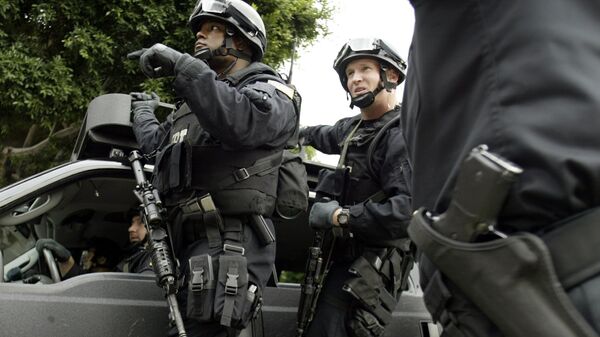WASHINGTON (Sputnik) — The US government’s use of surveillance planes is a common practice during times of unrest, US Attorney General Loretta Lynch said in a press conference on Friday following reports that small planes had been sighted flying over Baltimore following the protests over the death of African-American Freddie Gray
"It is actually not an uncommon practice for police helicopters to fly over to try and figure out where are people moving to, or where might violence be breaking out and provide information down to the field, similar to officers on the ground providing surveillance reports."
Earlier in the week Baltimore residents spotted surveillance planes flying low in the west of Baltimore where riots had ignited several days earlier, local media reported.
Although Lynch admitted that she had seen the reports, the newly sworn-in US attorney general said that such a means of surveillance was not “a new occurrence.”
“I think you see it in any number of cities,” Lynch explained. “And it [surveillance plane] was for the limited purpose of finding out were there pockets of violence, and what could be done about that.”
The revelations of the surveillance planes prompted the American Civil Liberties Union (ACLU) to file a Freedom of Information request with the FBI, Drug Enforcement Agency and US Marshals Service to obtain data on the Baltimore surveillance flights.
The ACLU warned that the planes could have been used to “collect mass information about whole populations, potentially reaching far beyond what the police might need to manage unrest” by deploying cell phone trackers or license plate scanners.
Following the funeral of 25-year-old Gray, who died of spinal cord injuries sustained in a police van, on April 27, violent riots erupted in Baltimore. The rioters looted stores, injured 20 police officers, destroyed 15 buildings and set 144 cars on fire.
The riots prompted the Maryland Governor Larry Hogan to declare a state of emergency and deploy over 5,000 National Guard Troops to quell the situation, followed by the Baltimore mayor issuing a week long citywide curfew.



